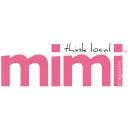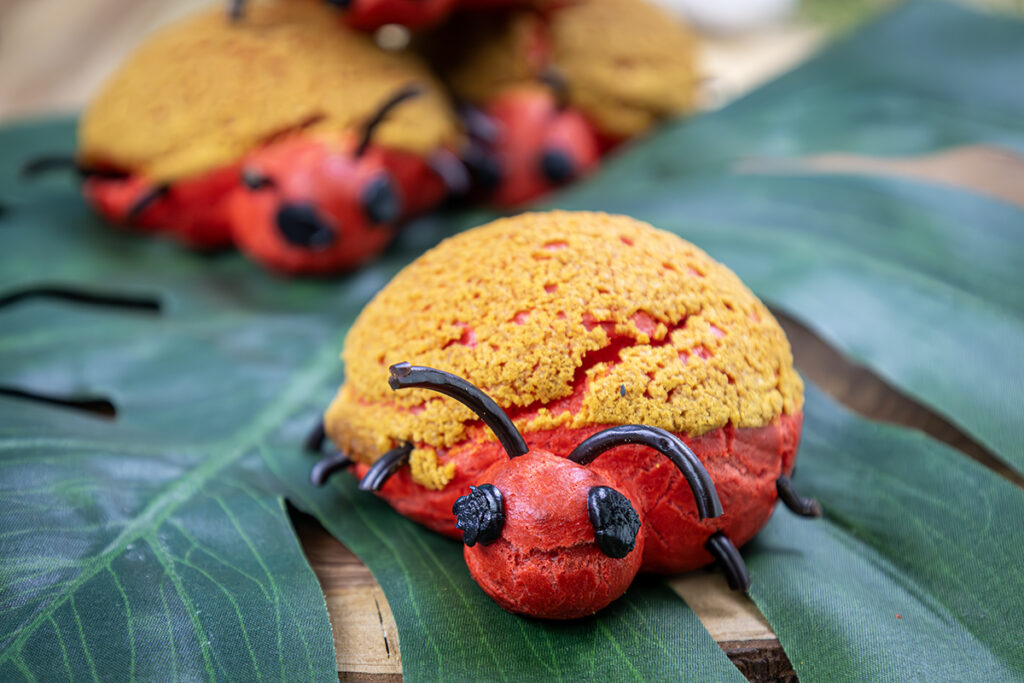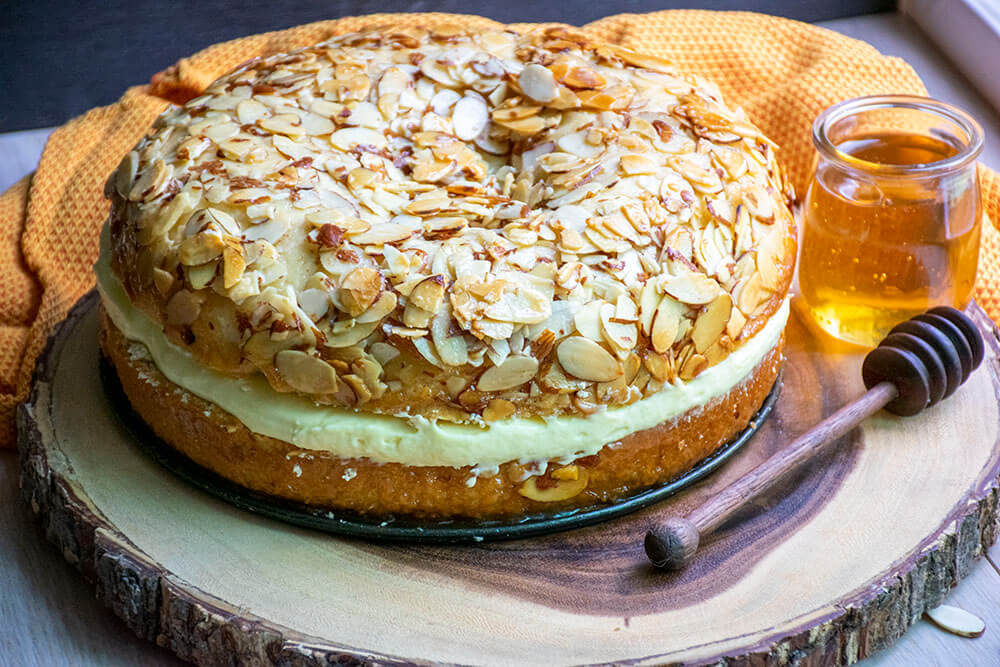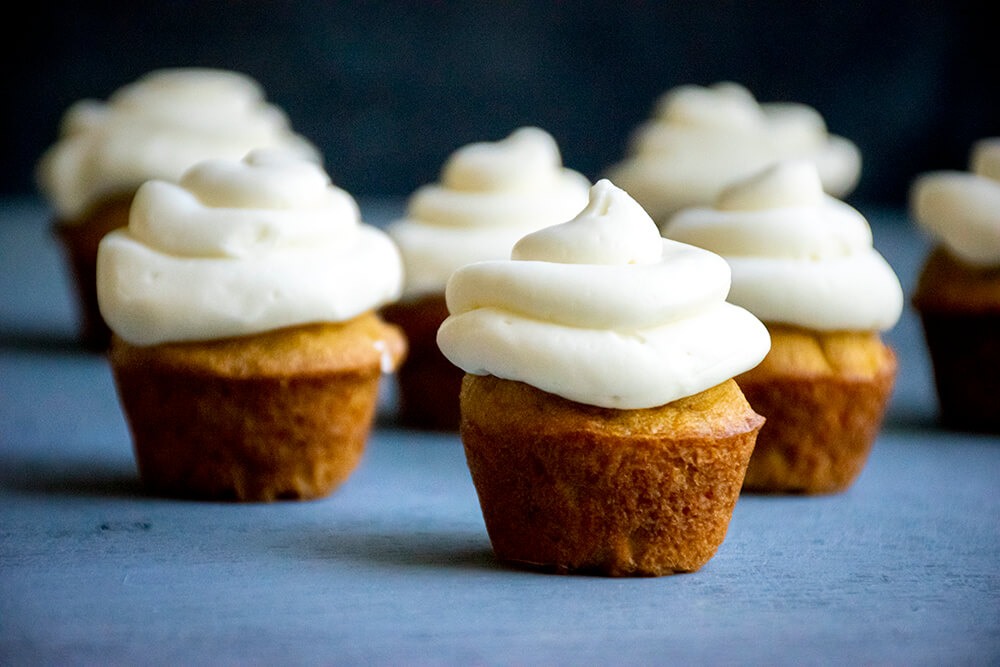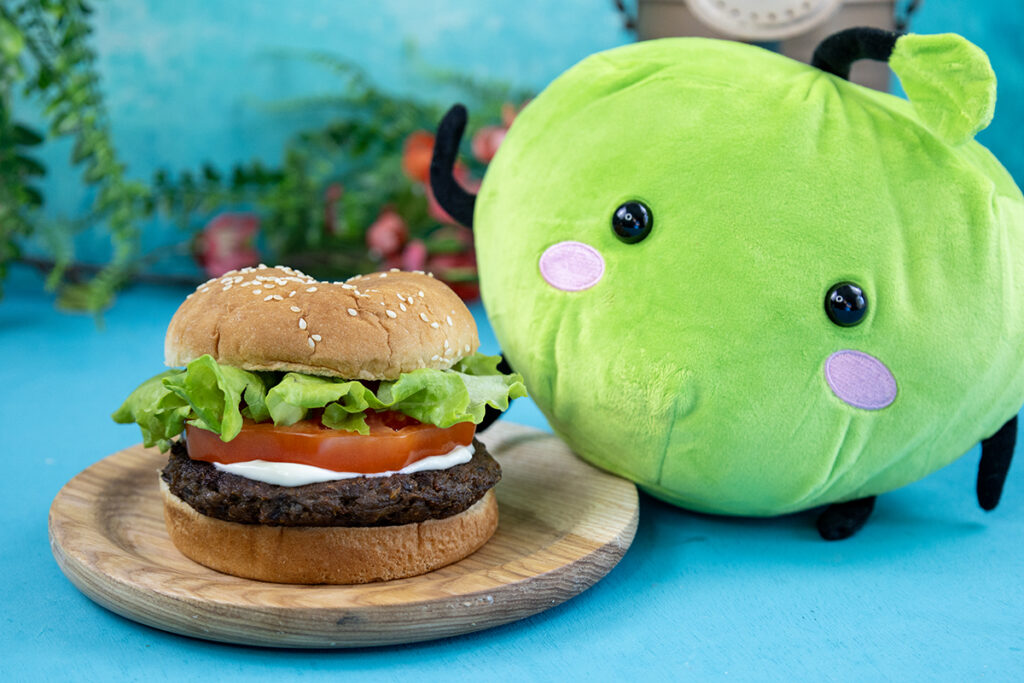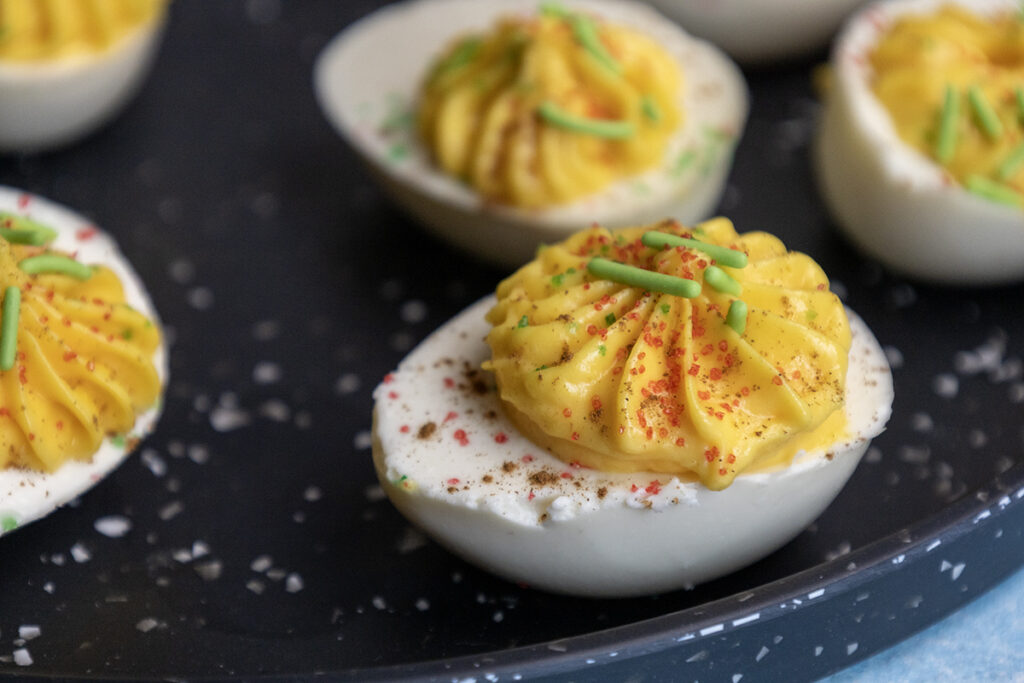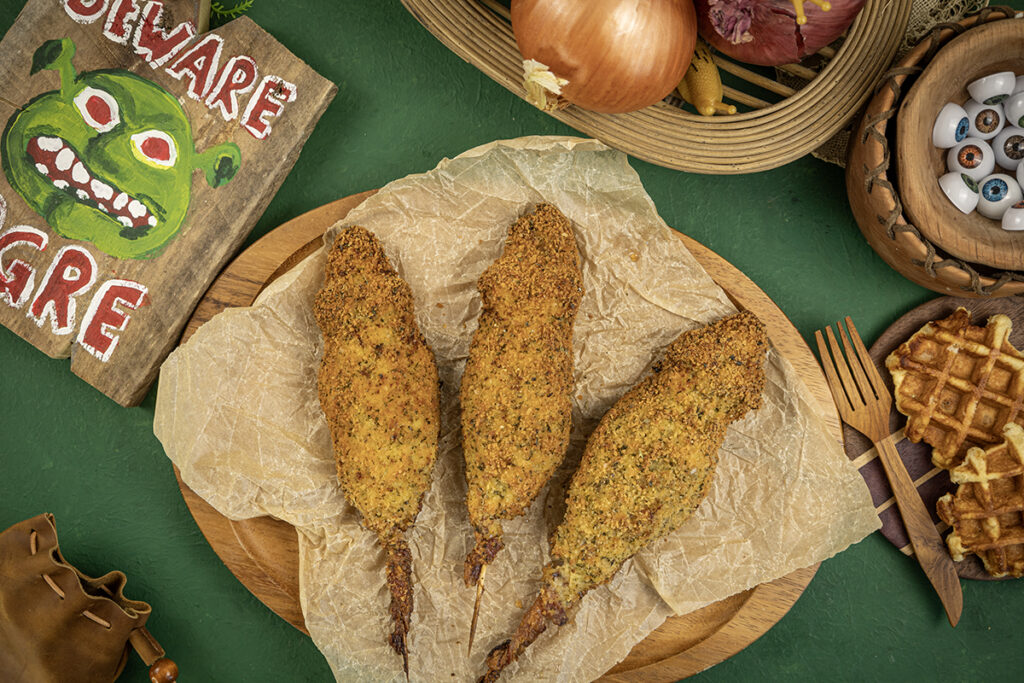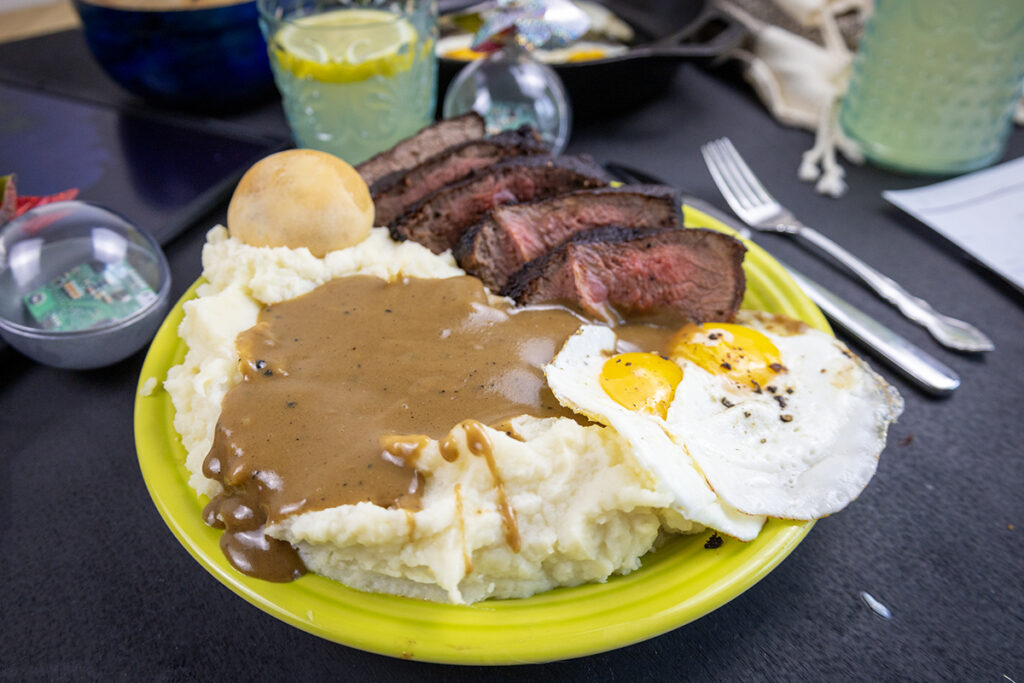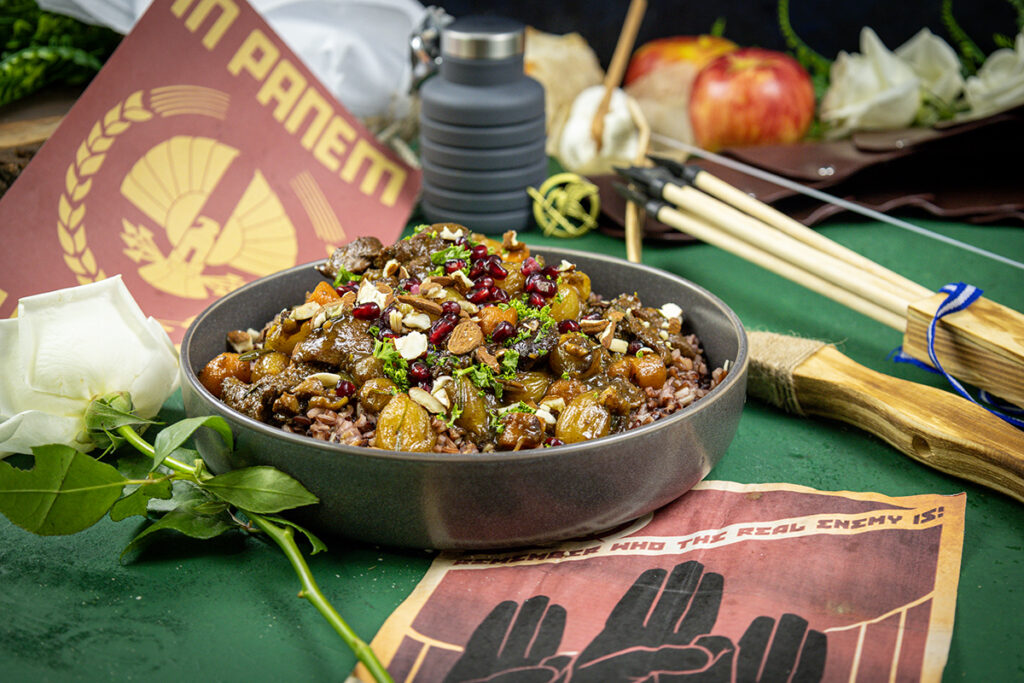DIY Hamburger Bun Recipe
The Starving Chef is supported by Hungry People like you. When you make a purchase through an affiliate link on my site, I may earn a little bit of cash on the side (at no extra cost to you) to help keep my kitchen running. Read our disclosures here.
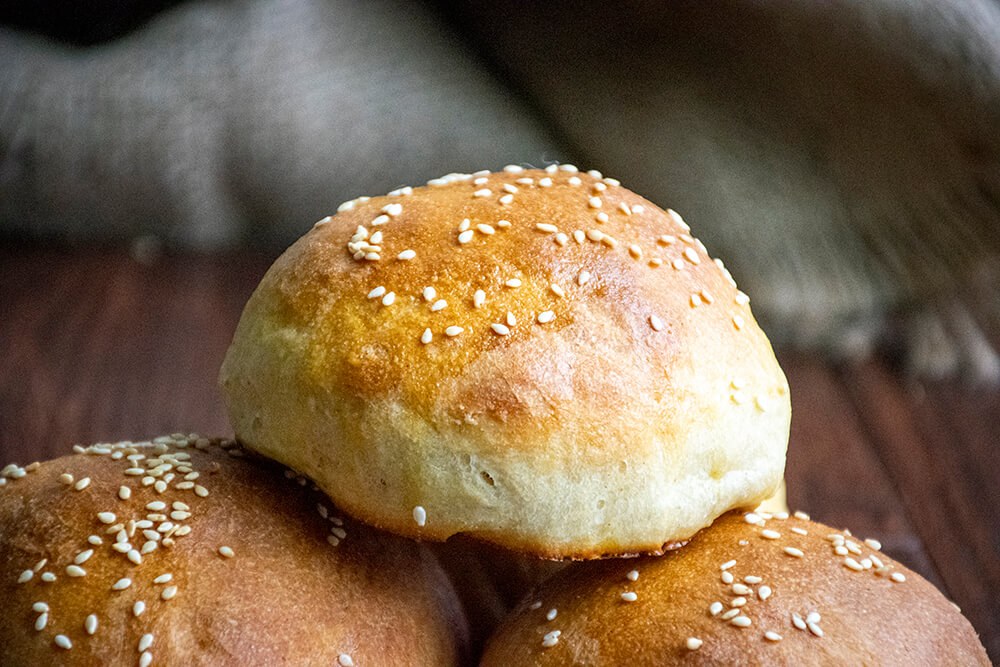
When quarantine first went into effect (over a year ago now, for future readers’ reference), many common store items disappeared off the shelves. Everything from toilet paper to noodles were stripped from grocery store shelves. It was definitely surreal to walk down the aisles and nearly everything was bare.
For the first few weeks, even white bread and buns were hard to find as people shifted into cooking outdoors in order to socialize with proper distance. The sudden shift into quarantine life ignited many people to learn how to bake things like bread from scratch – leading to shortages of ingredients like yeast and flour.
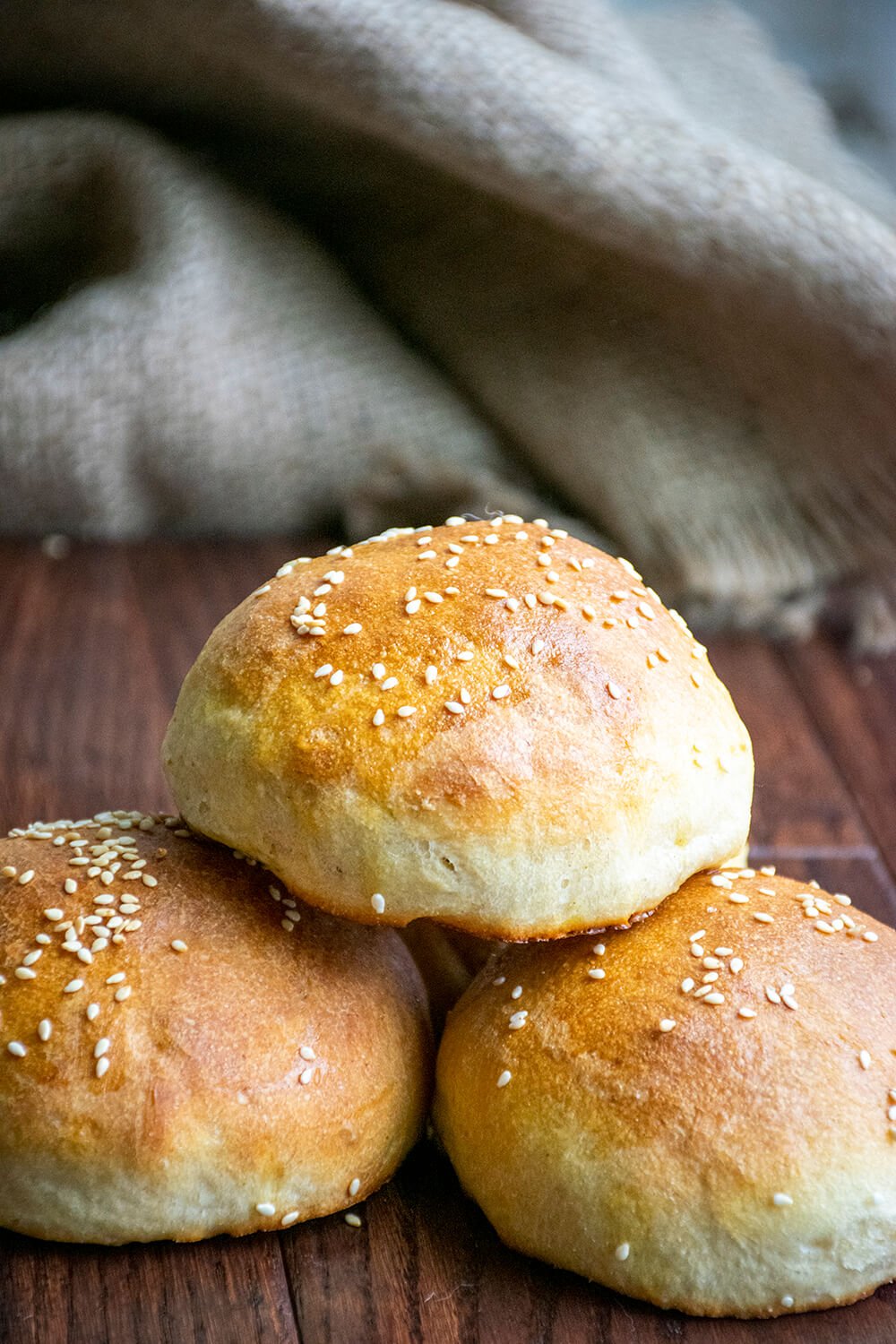
It was thanks to a combination of not being able to find any hamburger buns to serve my sloppy joes on and also not being able to find any active or instant yeast that led me to find cake yeast.
I found the cake yeast tucked away in the coolers of my local grocery store, in a spot where most people wouldn’t think to look – with the eggs. Now I’m not saying I utilized this knowledge to my advantage to stock up on yeast for the duration of the shortage, but no one else seemed to think to check the coolers for active yeast. Hopefully you’ll never need that secret knowledge to check your own stores during the next run on yeast, but just know, there are alternative spots it can be kept in the store aside from the baking aisle. *wink wink*
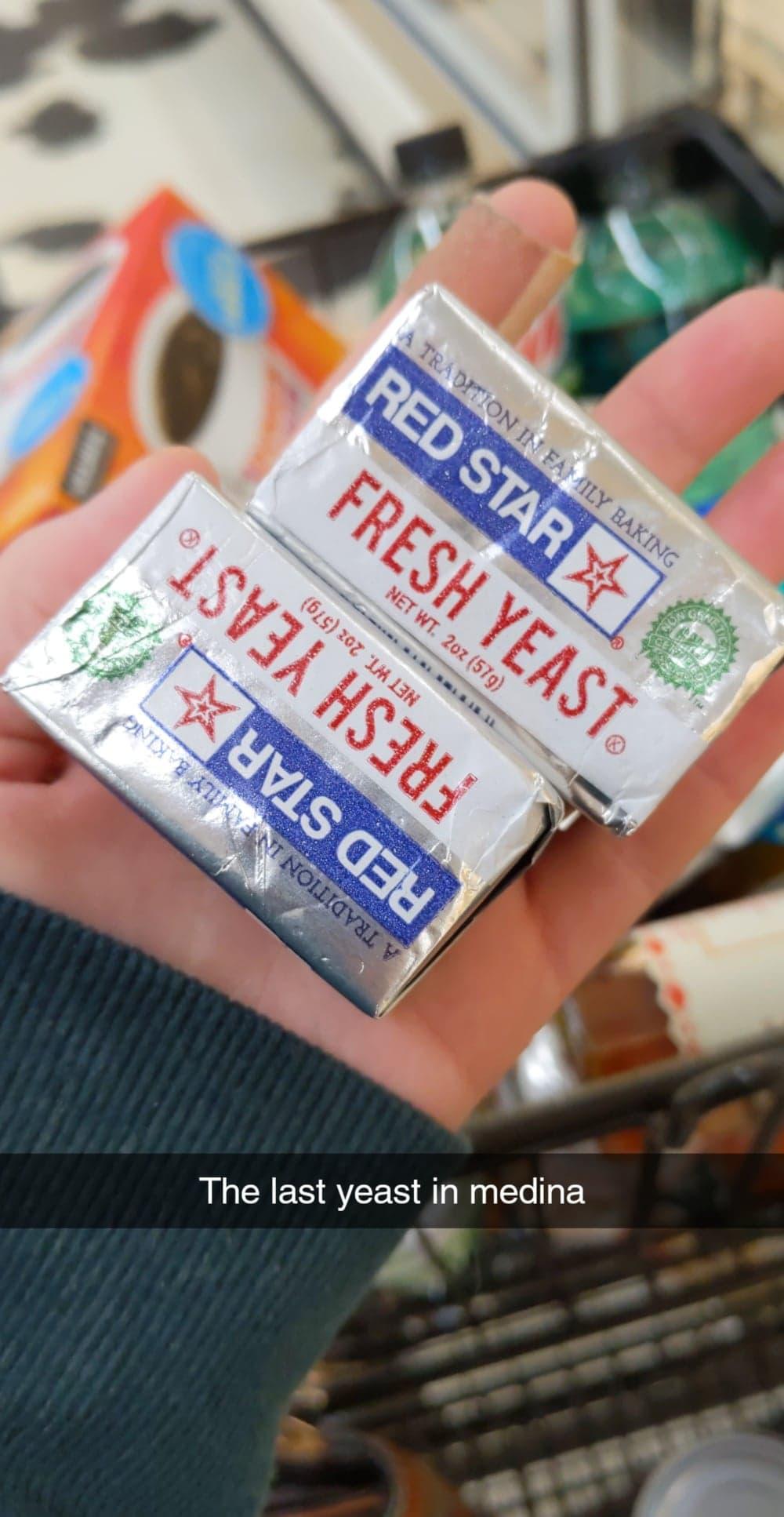
What is cake yeast?
Cake yeast is basically a compressed block of active wet yeast. Unlike dried yeasts like quick rise or active dry yeasts, cake yeast dies incredibly quickly so it has to be used within a few days. And yes, I said dies and not dries. Yeast is technically a living organism after all.
Dried yeasts have a longer shelf life, usually about six months to a year. Most dried yeasts need to be reactivated with warm water and a touch of sugar. Cake yeast can be activated in the same way, by sprinkling it over water that is about 110 F and letting it foam up. The fresh yeast cells activate more quickly, making it great to use in cakes and sweet breads as well as more ‘common type’ breads like rolls and buns.
One cake yeast block is equivalent to about two and a half packets of regular dried yeast. I recommend cutting the block into three equal portions and use each third as you would use a packet of yeast.
You can also use regular active dry or instant quick rise yeast for these rolls as well. The type of yeast really doesn’t make a huge difference in taste or texture – at least not for how it will be used in this recipe. It does effect how quickly it will rise and how quickly you can get your buns in the oven.
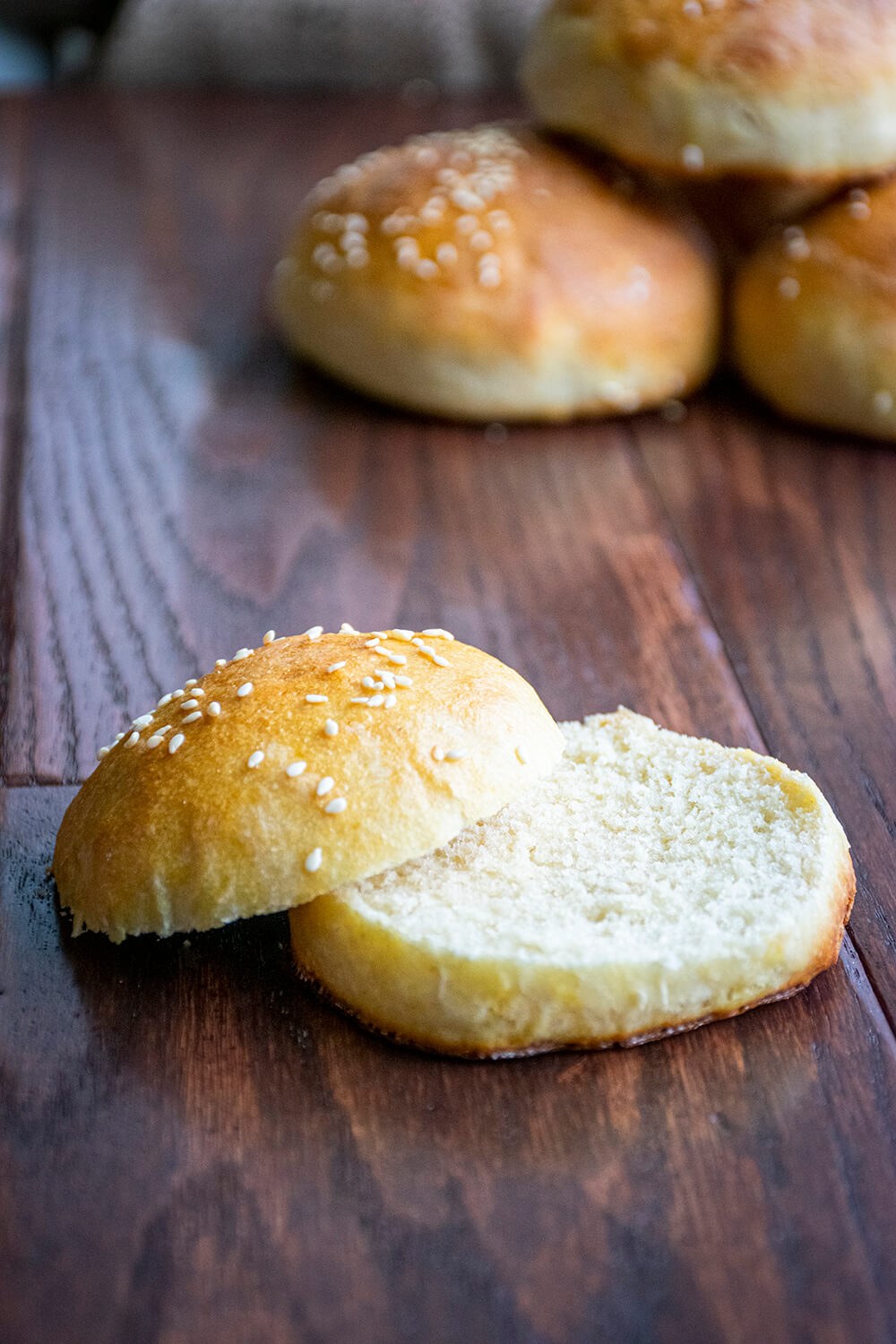
What do you need for homemade hamburger buns?
This recipe is incredibly simple – and definitely one to keep in your back pocket when you are having your next doom’s day cookout and can’t find any buns.
- flour – I used all purpose flour for this recipe but wheat flour can also be substituted
- yeast – cake yeast is used in this recipe for a dough that rises quickly and efficiently
- oil – helps bring together a smooth dough – and really helps bring out the golden color!
- salt – ultra fine salt can be used to flavor these buns. It’s better to use fine salt over coarse salt in order to have a consistent flavoring throughout.
- sugar – on the flip side, sugar is essential to not only feeding the yeast but adding a hint of sweetness to balance out the salty.
- sesame seeds – for topping! These are totally optional but give these buns their classic hamburger bun look.
- egg wash – combine eggs and water and brush on top for shiny golden brown buns.
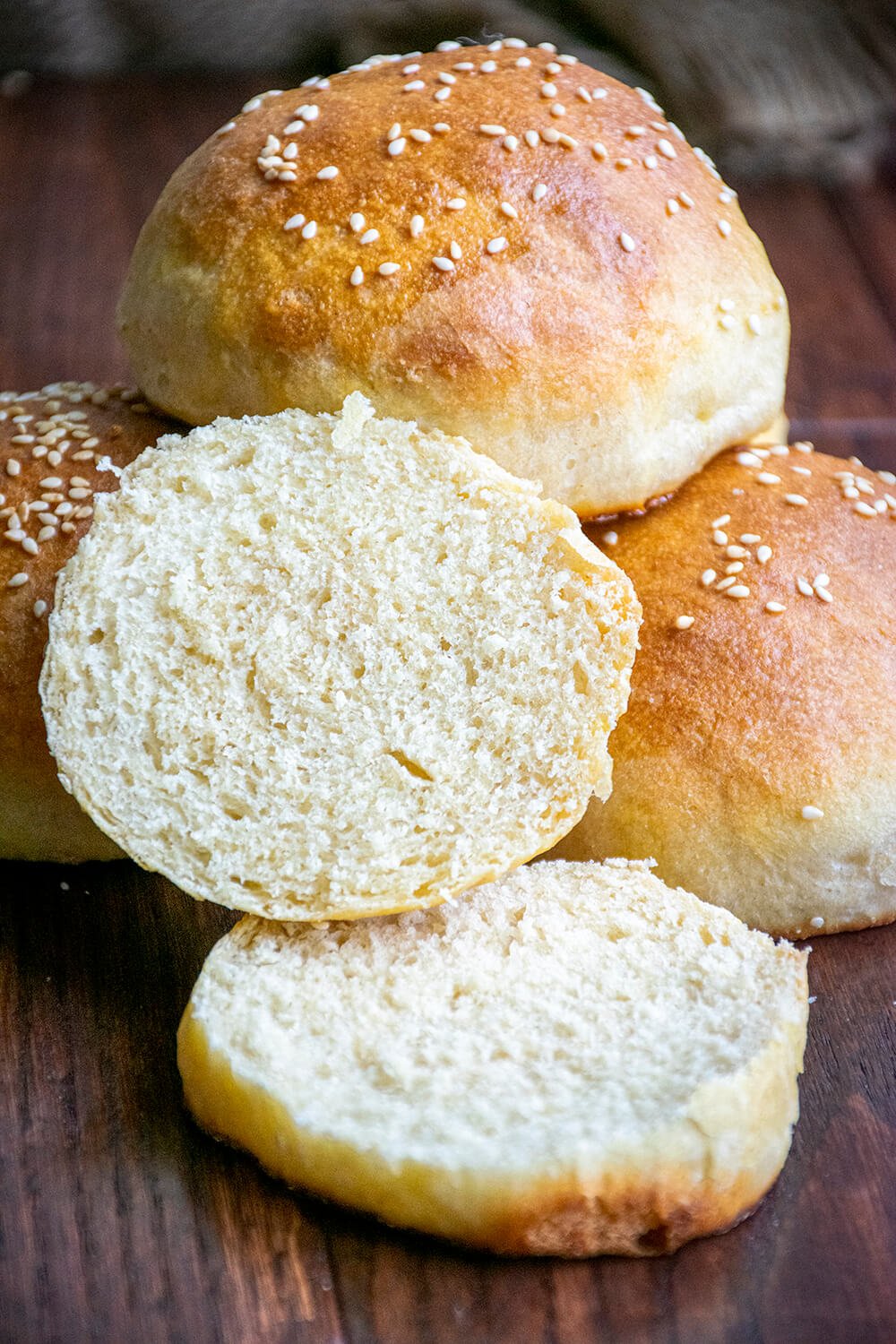
Make That Bread
Combine the yeast and warm water to get the yeast nice and bubbly. Adding the sugar in this step will help the yeast activate – and give it something yummy to snack on while it foams up. I activated my yeast and water in the bowl of a stand mixer before adding the flour and salt mix in, one cup at a time. If you are making flavored buns, now is also a good time to add in flavorings like garlic or onion.
When the dough is no longer sticking to the sides of the mixing bowl, I like to turn it out onto a floured surface and knead it until smooth. This process usually takes about ten minutes to really get that dough just right.
Now it’s time for the first rise. This initial rise needs to double the size of the dough – which can take anywhere from one to three hours (depending on the weather and conditions of your home). A quick way to raise dough is to use the proofing option on your oven. Or if your oven doesn’t have this option, sometimes just putting it into the oven with the light on for a few hours will give the dough the right heat and environment to double up quickly.
Once it has doubled up, punch it down and form it into the individual buns before starting the second rise. I actually put the buns into the baking pan for the final rise so I could put the whole tray directly into the oven without losing the shape of the buns.
Bake Those Buns
When the buns have finished their second rise, it’s time to give the buns a quick brush of egg wash and then sprinkle on the sesame seeds (or other toppings like poppyseeds or dried onion!) before popping into the oven to bake!
Let the buns cool completely before pulling them apart and slicing in half. I like to toast mine for a minute or two before piling on the toppings.
ENJOY!
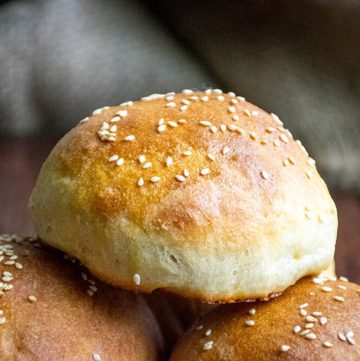
DIY Hamburger Bun Recipe
Ingredients
- 4 cups flour
- ⅓ block cake yeast crumbled
- 1 ¼ cup water warmed to 110°F
- ⅓ cup vegetable oil
- ¼ cup sugar
- 1 tablespoon salt
- 3 tablespoons sesame seeds + more to taste
- 2 eggs room temperature
Instructions
- In a small bowl, whisk together the flour and salt until well combined and set aside. In the bowl of a stand mixer with a dough hook attached, combine the cake yeast, sugar and warm water. Stir a few times to wet the cake yeast and sugar entire. Let the yeast activate for ten minutes.
- Start the stand mixer on the lowest or stir setting. Add one egg and the oil; then the flour and salt mix, one cup at a time. Continue to stir with the stand mixer on a low to medium low setting until a thick dough begins to form.
- When the dough stops sticking to the sides of the mixer, tip the dough out onto a floured surface. Knead for about ten minutes, until the dough is smooth and slightly elastic.
- Place the dough into a bowl large enough for the dough to double in size. Cover with plastic wrap, place into a warm spot (use the proofing mode on your oven at 90-100F) and let rise for at least one hour or until doubled in size.
- When the dough has doubled in size, punch it down and form into 8-12 buns. Place the buns into a 9×13 baking dish or baking sheet. It's okay if they are not touching, as they will rise more. Let the dough buns rise again for about 30 minutes, until about doubled in size.
- Preheat the oven to 425F. Make an egg wash by combining the last egg with one tablespoon of water. Whisk until frothy then brush the tops of the buns with the egg wash. Sprinkle on sesame seeds and other toppings as desired.
- Place the buns in the oven and bake for 8-12 minutes, until the buns are golden brown and cooked through. Let the buns cool for a few minutes on the baking sheet/pan and then transfer to a cooling rack to cool completely. For best results, let the buns cool completely before slicing. Enjoy!




